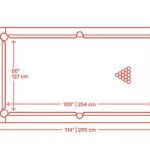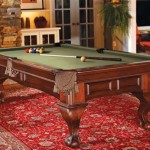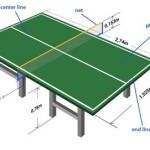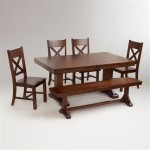How Big Is A Changing Table?
Determining the appropriate size of a changing table is a crucial undertaking for parents or caregivers preparing for a new baby. The dimensions of a changing table impact its safety, practicality, and suitability for the available space. A well-chosen changing table provides a dedicated and ergonomic surface for diaper changes, contributing to both the caregiver's comfort and the infant's well-being. Understanding the standard dimensions, variations in size, and factors influencing the ideal size is essential for making an informed purchase.
A changing table, at its core, provides a safe and convenient space to change a baby's diaper. It offers a raised surface, reducing the strain on a caregiver's back and knees, particularly during the numerous diaper changes that occur daily. Beyond the practical aspects of diapering, a changing table often incorporates storage features such as shelves, drawers, or baskets. These storage components allow caregivers to keep essential supplies like diapers, wipes, creams, and clean clothes readily accessible. This organized and centralized arrangement streamlines the diapering process and mitigates the risk of leaving the baby unattended while reaching for necessities.
The size of a changing table is best understood through a combination of measurements, each contributing to the overall functionality and suitability of the unit. These key dimensions include the surface area, the overall height, and the depth of the guardrails or sides. Each aspect contributes in a distinct manner to the safety and comfort level that the table provides.
Standard Dimensions of Changing Tables
While changing tables come in various shapes and sizes, there are generally accepted standard dimensions that offer a baseline for understanding the typical proportions. These standard measurements consider factors like the average size of a baby, the ergonomic needs of caregivers, and the constraints of typical nursery spaces.
The standard surface area of a changing table typically ranges from 30 to 36 inches in length and 18 to 20 inches in width. This surface area provides ample space for the baby to lie comfortably during diaper changes, with enough room for maneuvering and cleaning. The length is primarily determined by the length of the baby, ensuring adequate support from head to toe. The width allows for sufficient space on either side of the baby, enabling caregivers to efficiently access and utilize supplies.
The height of a changing table is a critical factor in promoting caregiver comfort. A standard changing table height falls within the range of 34 to 36 inches. This height is designed to minimize bending and stooping, reducing the strain on the caregiver's back and knees. For taller individuals, a slightly taller changing table might be preferable, while shorter individuals may find a lower height more comfortable. It's important to consider individual ergonomic needs when selecting a changing table height.
Safety is paramount when selecting a changing table. The guardrails or sides of a changing table play a crucial role in preventing the baby from rolling off the table during diaper changes. Ideally, the guardrails should be at least 4 inches high, providing a secure barrier around the changing surface. Taller guardrails offer enhanced protection and may be particularly beneficial for active babies who tend to move around a lot. It is vital to ensure that the guardrails are sturdy and securely attached to the changing table structure.
Variations in Changing Table Sizes
While standard dimensions provide a helpful guideline, changing tables are available in a variety of sizes to accommodate different needs and preferences. These variations cater to specific spatial constraints, lifestyle considerations, and budget limitations. Understanding the options available allows caregivers to select a changing table that best suits their individual circumstances.
Compact changing tables are designed for nurseries with limited space. These tables typically feature smaller surface areas, often ranging from 24 to 30 inches in length and 16 to 18 inches in width. Compact changing tables prioritize space efficiency without sacrificing essential safety features like guardrails. They often incorporate storage options such as shelves or drawers to maximize functionality within their smaller footprint.
Combination units, which integrate a changing table with other furniture pieces like dressers or cribs, offer a versatile solution for maximizing space and functionality. These units often feature a removable changing table topper that sits atop a dresser or converts from a crib. Combination units provide ample storage space and adapt to the changing needs of a growing child. The changing table surface area in these units typically aligns with standard dimensions, but the overall size of the unit may be larger.
Wall-mounted changing tables offer a space-saving solution by attaching directly to the wall. These tables are ideal for small bathrooms or nurseries where floor space is limited. Wall-mounted changing tables typically fold down for use and fold back up when not needed, maximizing space efficiency. The surface area of wall-mounted changing tables may vary, but they generally adhere to standard dimensions to ensure adequate space for diaper changes. It is critical to ensure the wall can safely support the weight of the table and child.
Factors Influencing the Ideal Size of a Changing Table
Determining the ideal size of a changing table requires careful consideration of several factors, including the available space, the caregiver's height, and the baby's size and activity level. Addressing these factors ensures that the selected changing table is safe, comfortable, and functional.
The amount of available space in the nursery is a primary consideration when selecting a changing table size. Measure the dimensions of the room and consider the placement of other furniture pieces like the crib, dresser, and rocking chair. Ensure that there is sufficient space to move around the changing table comfortably and safely. If space is limited, a compact changing table or a wall-mounted unit may be the most suitable option.
Consider the height of the caregiver who will be primarily using the changing table. A changing table that is too low can cause back strain, while a changing table that is too high can be awkward and uncomfortable to use. Aim for a changing table height that allows the caregiver to maintain good posture while changing the baby. Adjustable height changing tables offer flexibility and can be customized to suit individual needs.
The baby's size and activity level also play a role in determining the ideal changing table size. Larger babies may require a changing table with a larger surface area to ensure adequate support and comfort. Active babies who tend to wiggle and move around a lot may benefit from a changing table with taller guardrails to prevent falls. As babies grow, their changing needs evolve, so it's important to consider their future growth when selecting a changing table.
When planning the nursery space, consider a changing table that can be repurposed after the diapering stage. A dresser with a removable changing topper can transition into a regular dresser as the child grows older. This approach extends the lifespan of the furniture and provides continued utility beyond the diapering years. Alternatively, some changing tables can be converted into bookshelves or storage units.
Safety certifications and standards provide assurance that a changing table has been tested and meets established safety requirements. Look for changing tables that are certified by organizations like the Juvenile Products Manufacturers Association (JPMA). JPMA certification indicates that the changing table has undergone rigorous testing for stability, durability, and potential hazards. Adherence to safety standards provides peace of mind and reduces the risk of accidents.
The materials used in the construction of a changing table influence its durability, stability, and overall safety. Choose changing tables made from solid wood or engineered wood with non-toxic finishes. Avoid changing tables made from flimsy materials that may warp or break under the weight of the baby. Ensure that all hardware is securely fastened and that there are no sharp edges or protruding parts that could pose a hazard.
In addition to understanding the physical dimensions, researching user reviews and ratings provides valuable insights into the real-world performance of different changing tables. Parents and caregivers often share their experiences with specific models, highlighting both the pros and cons. Pay attention to comments regarding stability, ease of assembly, storage capacity, and overall satisfaction.
Ultimately, selecting the right size changing table is a personal decision based on individual needs, preferences, and circumstances. By carefully considering the standard dimensions, variations in size, and influencing factors like space, caregiver height, and baby's size, parents can make an informed purchase that promotes safety, comfort, and convenience. It is vital to remember that the primary goal is to create a safe and functional space for diaper changes, ensuring the well-being of both the caregiver and the baby.

Pakasept Freestanding Changing Table With Drawers White Drawer Dresser Removable Tray Extra Big Cabinet To

Pakasept Freestanding Changing Table With Drawers White Drawer Dresser Removable Tray Extra Big Cabinet To

Pakasept Freestanding Changing Table With Drawers White Drawer Dresser Removable Tray Extra Big Cabinet To

Changing W Plywood Doors From Steffy Wood S Swp1039p Church Furniture Partner

Pakasept Freestanding Changing Table With Drawers White Drawer Dresser Removable Tray Extra Big Cabinet To

Nursery Changing Tables Diy Dbo Janvrin Co

Pakasept Freestanding Changing Table With Drawers White Drawer Dresser Removable Tray Extra Big Cabinet To

Big Changing Table

Pakasept Freestanding Changing Table With Drawers White Drawer Dresser Removable Tray Extra Big Cabinet To

Big W Baby Change Table And Bath New Arrivals








